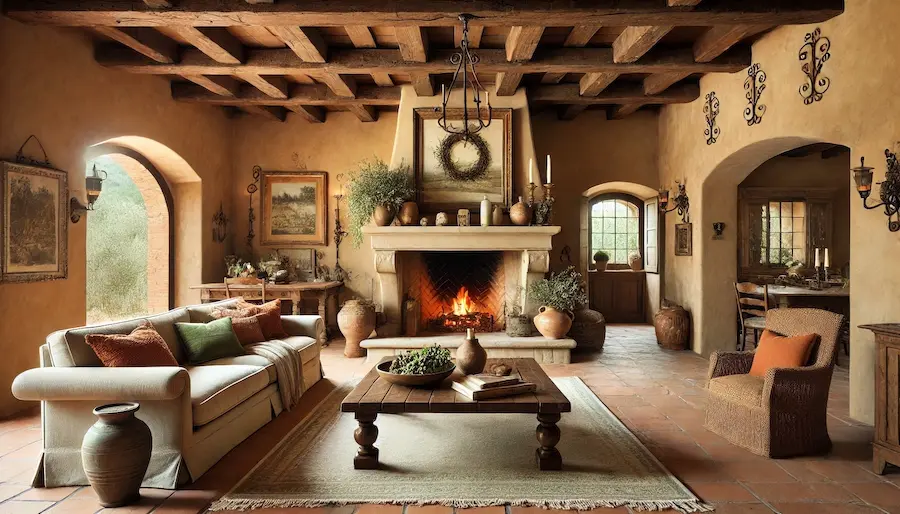A Tuscan living room exudes the rustic elegance and warmth of the Italian countryside, combining natural materials, earthy color palettes, and timeless design elements to create an inviting and sophisticated space.
History and Origins of Tuscan Design
Tuscan design draws inspiration from the villas and farmhouses of Tuscany, a region celebrated for its rich artistic heritage and picturesque landscapes. Rooted in the Renaissance period, this style emphasizes harmony with nature, incorporating locally sourced materials and traditional craftsmanship to reflect the region’s cultural and historical significance.
Key Features of a Tuscan Living Room
- Natural Materials: Utilize stone, wood, and wrought iron to bring the essence of the Tuscan countryside indoors. Exposed wooden beams, stone fireplaces, and terracotta floors are hallmark elements that add rustic charm.
- Earthy Color Palettes: Incorporate warm, earthy tones such as ochre, terracotta, olive green, and golden yellows to evoke the sun-drenched landscapes of Tuscany. These colors create a cozy and inviting atmosphere.
- Textured Walls: Apply plaster or stucco finishes to walls, often with a slightly rough texture, to emulate traditional Tuscan interiors. This technique adds depth and an aged patina to the space.
- Arched Doorways and Windows: Incorporate arches to add architectural interest and a sense of old-world charm, reflecting the classical influences prevalent in Tuscan architecture.
- Elegant Furnishings: Select sturdy, well-crafted furniture pieces with a distressed or antique finish. Ornate wooden tables, upholstered sofas with rich fabrics, and wrought iron accents contribute to the timeless appeal.
Applications of Tuscan Design in Living Rooms
- Grand Chandeliers: Install wrought iron chandeliers to provide ambient lighting and serve as a focal point, enhancing the room’s elegance.
- Vintage Rugs: Lay down Persian-style or vintage rugs with intricate patterns and rich colors to add warmth and tie the room together. These textiles introduce comfort and a sense of history.
- Decorative Pottery and Artwork: Display ceramic vases, terracotta pots, and artwork depicting pastoral scenes to infuse the space with cultural authenticity and artistic flair.
Considerations When Designing a Tuscan Living Room
- Balance and Harmony: While incorporating various elements, strive for a cohesive look by balancing textures, colors, and materials to prevent visual clutter. Aim for a harmonious blend that reflects the simplicity and elegance of Tuscan design.
- Natural Light: Maximize natural light through large windows or strategically placed mirrors to enhance the warm and welcoming ambiance. Natural light accentuates the earthy tones and textures, bringing the room to life.
- Personal Touches: Incorporate personal artifacts or family heirlooms to add individuality and a sense of belonging, making the space truly your own. These items contribute to the lived-in, timeless feel characteristic of Tuscan interiors.
Conclusion
Designing a Tuscan living room involves embracing natural materials, warm color schemes, and classical architectural elements to create a space that reflects the rustic elegance of the Italian countryside. By thoughtfully integrating these features, you can transform your living area into a timeless retreat that exudes warmth and sophistication.
